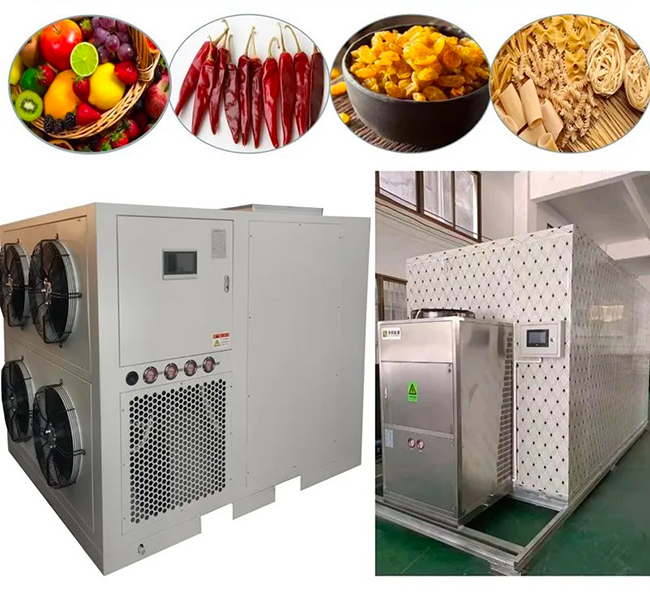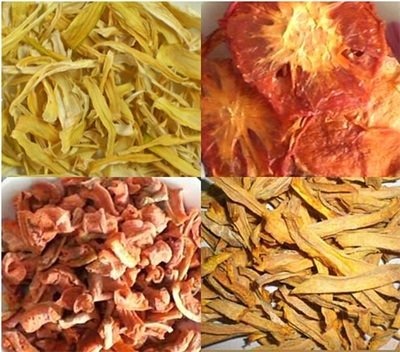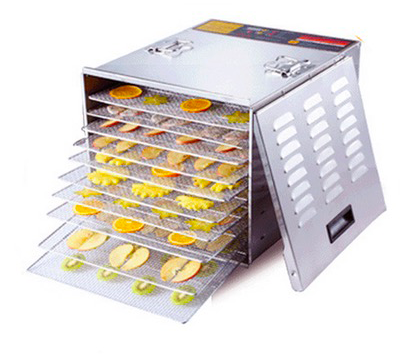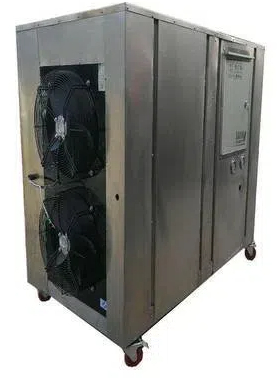
Content Menu
● Introduction
● Understanding Heat Pump Dryers
● Key Components of Heat Pump Dryers
● Understanding Condenser Dryers
● Key Components of Condenser Dryers
● Efficiency Comparison
>> Energy Consumption
>> Drying Time
● Product Quality
● Environmental Impact
● Additional Advantages of Heat Pump Dryers
● Applications of Heat Pump Dryers in Various Industries
● Comparison with Solar Dryers
● Benefits and Efficiency of Condenser Dryers
● Suitability for Different Food Products
● Advanced Technology Integration
● Conclusion
● Related Questions
>> 1. What are the main benefits of using a heat pump dryer?
>> 2. How do heat pump dryers compare to traditional drying methods?
>> 3. Are there any disadvantages to using heat pump dryers?
>> 4. What types of food products are best suited for heat pump drying?
>> 5. How can I determine which dryer is best for my business?
Introduction
In the food processing industry, drying is a critical step that affects product quality, shelf life, and energy consumption. Among the various drying technologies available, heat pump dryers and condenser dryers are two popular options. This article will explore the efficiencies of heat pump dryers compared to condenser dryers, focusing on their operational mechanisms, energy consumption, product quality, and overall effectiveness in food drying applications.

Understanding Heat Pump Dryers
Heat pump dryers utilize a refrigeration cycle to extract moisture from food products. They operate by absorbing heat from the environment and transferring it to the drying chamber. This process allows for lower drying temperatures, which is particularly beneficial for heat-sensitive foods.
Key Components of Heat Pump Dryers
- Compressor: Increases the pressure and temperature of the refrigerant.
- Evaporator: Absorbs heat from the air or surrounding environment.
- Condenser: Releases heat back into the drying chamber, raising the temperature of the air used for drying.
- Expansion Valve: Regulates the flow of refrigerant within the system.
Understanding Condenser Dryers
Condenser dryers function by heating air and passing it through food products. The moisture in the air condenses and is collected in a tank. This method typically operates at higher temperatures, making it effective for a wide range of food products.
Key Components of Condenser Dryers
- Heating Element: Heats the air before it enters the drying chamber.
- Fan: Circulates hot air through the food products.
- Condenser Unit: Cools the air to condense moisture, which is collected in a tank.
Efficiency Comparison
Energy Consumption
One of the most significant advantages of heat pump dryers is their energy efficiency. They can reduce energy consumption by 60% to 80% compared to traditional condenser dryers. This efficiency is achieved through:
- Heat Recovery: Heat pump systems recycle latent heat from exhaust air, minimizing energy loss.
- Lower Operating Temperatures: By operating at lower temperatures, heat pump dryers consume less energy while maintaining product quality.
In contrast, condenser dryers typically consume more energy due to their higher operational temperatures and lack of heat recovery mechanisms.

Drying Time
While heat pump dryers are more energy-efficient, they often require longer drying times compared to condenser dryers. The gentle drying process helps preserve flavor and nutrients but can slow down production rates. For businesses prioritizing speed, condenser dryers may be more suitable despite their higher energy costs.
Product Quality
The quality of dried products is paramount in food processing. Heat pump dryers excel in this area due to their ability to maintain lower temperatures during drying. This results in:
- Preservation of Nutritional Value: Lower temperatures help retain vitamins and minerals that might be lost in high-temperature drying processes.
- Enhanced Flavor and Color: Gentle drying minimizes oxidation and browning reactions that can occur at higher temperatures.
Condenser dryers can effectively dry a variety of products but may compromise quality for speed and efficiency.
Environmental Impact
Heat pump dryers are generally more environmentally friendly due to their lower energy consumption and reduced carbon footprint. By utilizing renewable energy sources and minimizing waste, they contribute positively to sustainability goals in food processing.
Additional Advantages of Heat Pump Dryers
One of the most notable features of heat pump dryers is their environmental friendliness. Unlike traditional drying technologies that often rely heavily on fossil fuels and emit a significant amount of greenhouse gases, heat pump dryers offer a more sustainable solution. By utilizing renewable energy sources such as solar or geothermal, the carbon footprint of the drying process is considerably reduced.
Furthermore, heat pump dryers generally operate quietly, making them suitable for use in locations where noise pollution is a concern. This makes these systems ideal for use in urban settings or in food processing facilities near residential areas.
Heat pump dryers also provide flexibility in application across a wide range of food types. From temperature-sensitive products like herbal teas and spices to bulkier items such as grains and beans, these dryers maintain high product integrity and quality due to their precise control systems.
Applications of Heat Pump Dryers in Various Industries
Beyond fruit and vegetable dehydration, heat pump dryers have found extensive applications in sectors like pharmaceutical drying, fish processing, and even textile industries where drying efficiency and quality are paramount. The customization options available in these systems allow them to be tailored to specific industrial needs, providing optimal results across different types of products.
Comparison with Solar Dryers
While solar dryers also present a low-cost and environmentally friendly solution, they depend heavily on weather conditions and may not be as reliable as heat pump dryers in regions with less sunlight. Heat pump dryers overcome these limitations by ensuring consistent drying times and quality, unaffected by external environmental factors.
Benefits and Efficiency of Condenser Dryers
Condenser dryers have carved out a niche in the food drying industry due to their robustness and speed. These dryers are particularly beneficial for industries where a high throughput is necessary. Their ability to rapidly reach high temperatures makes them suitable for drying dense products like meat products, fish, or baked goods, which require quick moisture removal to maintain quality.
A key benefit of condenser dryers is their ability to function independently of external weather conditions. This reliability ensures that production schedules remain stable, which is crucial for meeting deadlines in commercial processing environments. Unlike air drying or solar drying methods, condenser dryers provide a controlled environment that can be adjusted to fit specific drying profiles of various products.
Condenser dryers also contribute to significant reductions in product drying times. This efficiency translates into lower labor costs and increased turnover, offering an attractive proposition for food manufacturers looking to optimize their operations.
Suitability for Different Food Products
Given their versatility, condenser dryers can be employed across a diverse array of food products. They are effective for products that require a more controlled drying process, such as dairy powders, pasta, or even pre-cooked meals that need precise moisture content levels to ensure shelf stability and quality.
Advanced Technology Integration
Modern condenser dryers are equipped with advanced technology that allows for better monitoring and control of the drying process. Features like automated moisture sensors and digital control panels enable operators to fine-tune procedures to achieve ideal results tailored to each product's unique needs. This enhancement of drying precision not only preserves food quality but also maximizes energy efficiency.
Conclusion
In conclusion, heat pump dryers offer superior efficiency in terms of energy consumption and product quality compared to condenser dryers. However, they may require longer drying times and a higher initial investment. The choice between these two types of dryers ultimately depends on specific business needs, including production volume, product type, and budget considerations.

Related Questions
1. What are the main benefits of using a heat pump dryer?
Heat pump dryers provide significant energy savings, preserve product quality by operating at lower temperatures, and offer precise control over humidity levels during drying.
2. How do heat pump dryers compare to traditional drying methods?
Heat pump dryers are more efficient than traditional methods as they recycle heat and operate at lower temperatures, resulting in reduced energy consumption and better product quality.
3. Are there any disadvantages to using heat pump dryers?
The main disadvantages include higher initial costs and potentially longer drying times compared to other dryer types like condenser dryers.
4. What types of food products are best suited for heat pump drying?
Heat pump drying is ideal for sensitive foods such as fruits, vegetables, herbs, and other products that require gentle handling to maintain flavor and nutritional value.
5. How can I determine which dryer is best for my business?
Consider factors such as production volume, types of food products processed, budget constraints, and desired product quality when choosing between heat pump and condenser dryers.












